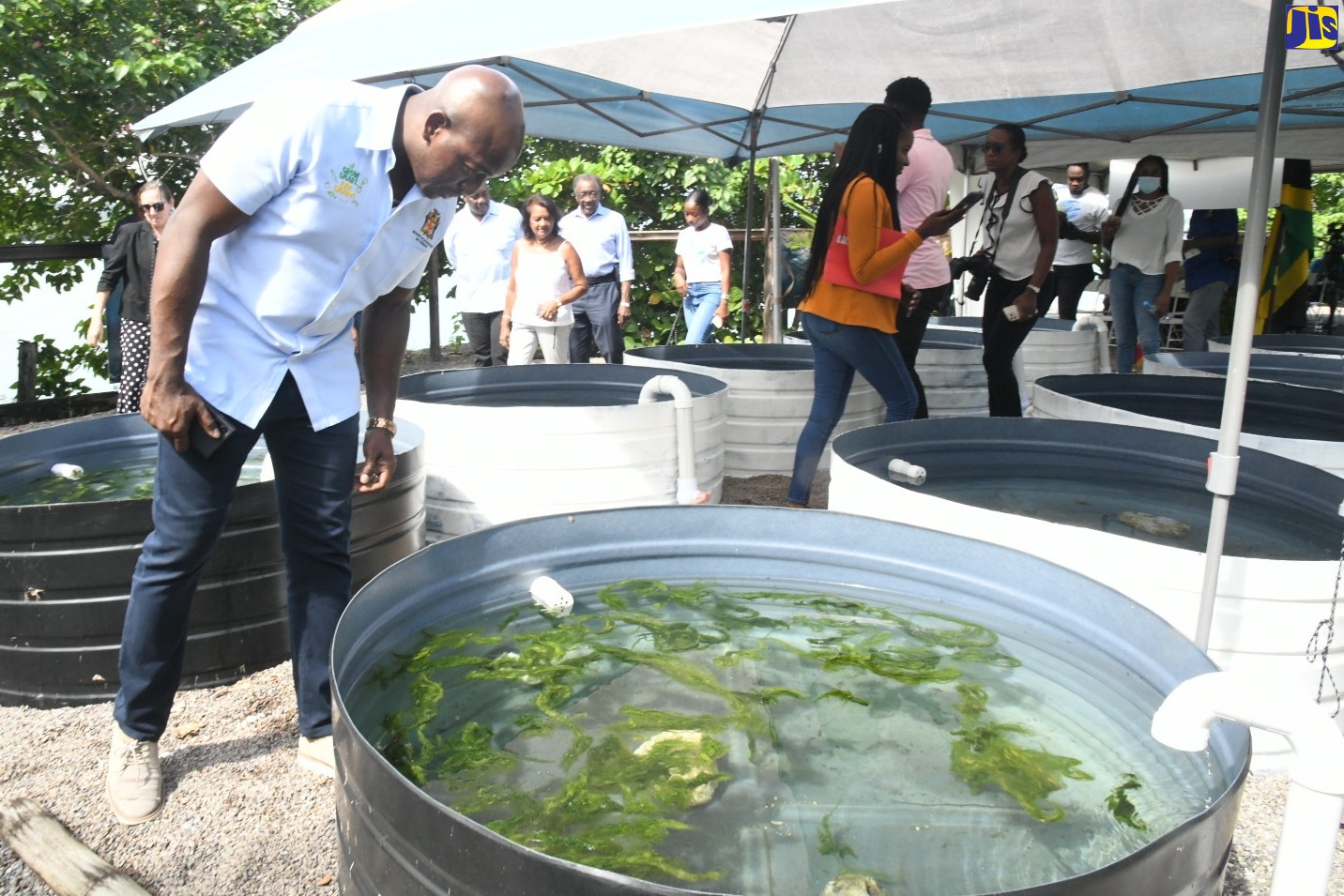Oracabessa Fish Sanctuary Benefiting from Marine Trust Reef Restoration Project
By: , November 8, 2022The Full Story
The Oracabessa Bay Fish Sanctuary in St. Mary is benefiting from enhanced protection and monitoring, through nature-based and scientific innovations under the Oracabessa Marine Trust Reef Restoration Project.
The project, which began in 2013 to primarily protect corals from bleaching and other forms of degradation, also aims to restore the Diadema Sea Urchin, after a mass die-off of the animal due to an unknown disease earlier this year.
The Diadema Urchin only lives among healthy reefs and relies on plants for food.
Following the provision of a US$17,000 grant from the United States (US) Bureau of Oceans and International Environmental and Scientific Affairs in 2019, a tank system designed for sea urchin and coral growing monitoring was implemented at the fish sanctuary.
Since then, the Trust, through the grant partnership, was able to collaborate with Tufts University in the United States to analyse the die-off of sea urchins, while 2,500 corals were grown in nurseries. Approximately 500 corals were out-planted, utilising reef-enhancement structures.
Meanwhile, an electronic pulley to lift the gate at the floating dock for better manoeuvring, especially in inclement weather, was installed.
Minister of Agriculture and Fisheries, Hon. Pearnel Charles Jr., in welcoming the work done, said the Ministry will continue to examine options to prevent further decline of the marine resources.
“We recognised the impact of overfishing, of the land-based pollution which runs off into the marine space, coastal development and, not to mention, the impact from the negative consequences of climate change,” Mr. Charles pointed out.
He was speaking during the grant partnership’s closing ceremony at James Bond Beach in St. Mary, where the Oracabessa Fish Sanctuary is located, on November 4.
For his part, US Ambassador to Jamaica, His Excellency Noah “Nick” Perry, said the project is a “great example” of a community that preserves its natural resources while sustaining local livelihoods.
“We hope that the expertise developed as part of this project will help inform other reef restoration initiatives across the island and inspire ongoing marine protection efforts,” he stated.
The Oracabessa Marine Trust manages the largest coral restoration programme on the island at the local fish sanctuary.
The sanctuary is among the 18 located across Jamaica, and since its establishment in 2010 has seen the reintroduction of sea turtles and thousands of new coral into the Oracabessa Bay area.




